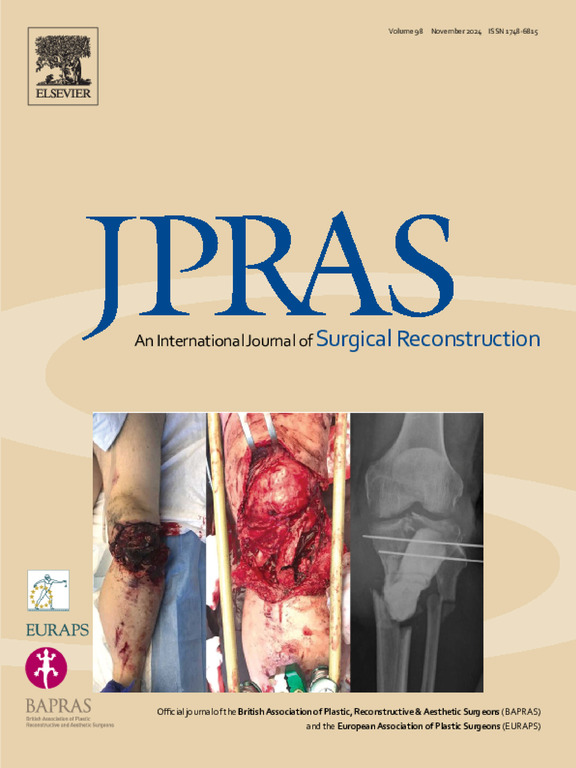Do female and male chests feel the same? A comprehensive quantitative sensory analysis
IF 2
3区 医学
Q2 SURGERY
Journal of Plastic Reconstructive and Aesthetic Surgery
Pub Date : 2025-02-01
DOI:10.1016/j.bjps.2024.11.045
引用次数: 0
Abstract
Introduction
There is growing interest in understanding chest sensory function due to the significant morbidity associated with impaired sensation following nerve injury. While the baseline quantitative sensory and pain thresholds in female and male patients have been studied in various other anatomic areas, there is little knowledge on quantitative sensation at the chest as well as the presence of possible gender differences. Therefore, this study aimed to conduct a comprehensive quantitative sensory analysis to determine if female and male chests feel the same.
Methods
A total of 100 chests in 50 subjects (25 females and 25 males) were evaluated. Quantitative sensory testing (QST) was performed on the nipple areola complex (NAC) and surrounding chest skin and included mechanical detection using Semmes-Weinstein monofilaments, two-point discrimination, vibration detection, pin prick, cold detection, warm detection, heat pain and pressure pain thresholds.
Results
Male chests were significantly more sensitive to mechanical detection, two-point discrimination, vibration, pin prick as well as cold and warm detection at both the NAC and chest as compared to female chests (p<0.05). Females had significantly lower sensory thresholds to heat pain and pressure pain detection at both the NAC and chest as compared to males (p<0.05).
Conclusion
The quantitative sensory functions of female and male chests are significantly different. This knowledge helps to better understand baseline sensory functions at the chest and the awareness of gender differences in this anatomic area.
女性和男性的胸部感觉一样吗?全面定量的感官分析。
导读:由于神经损伤后感觉功能受损的显著发病率,人们对了解胸部感觉功能越来越感兴趣。虽然女性和男性患者的基线定量感觉和疼痛阈值已经在各种其他解剖领域进行了研究,但对胸部定量感觉以及可能存在的性别差异知之甚少。因此,本研究旨在进行全面定量的感官分析,以确定女性和男性的胸部感觉是否相同。方法:对50例患者(男25例,女25例)的100个胸部进行评估。对乳头乳晕复合体(NAC)及胸部周围皮肤进行定量感觉测试(QST),包括semes - weinstein单丝机械检测、两点鉴别、振动检测、针刺检测、冷检测、热检测、热痛和压痛阈值。结果:男性胸部对NAC和胸部的机械检测、两点识别、振动、针刺以及冷热检测的敏感性均显著高于女性胸部(p结论:女性和男性胸部的定量感觉功能存在显著差异。这些知识有助于更好地理解胸部的基本感觉功能,以及对该解剖区域性别差异的认识。
本文章由计算机程序翻译,如有差异,请以英文原文为准。
求助全文
约1分钟内获得全文
求助全文
来源期刊
CiteScore
3.10
自引率
11.10%
发文量
578
审稿时长
3.5 months
期刊介绍:
JPRAS An International Journal of Surgical Reconstruction is one of the world''s leading international journals, covering all the reconstructive and aesthetic aspects of plastic surgery.
The journal presents the latest surgical procedures with audit and outcome studies of new and established techniques in plastic surgery including: cleft lip and palate and other heads and neck surgery, hand surgery, lower limb trauma, burns, skin cancer, breast surgery and aesthetic surgery.

 求助内容:
求助内容: 应助结果提醒方式:
应助结果提醒方式:


